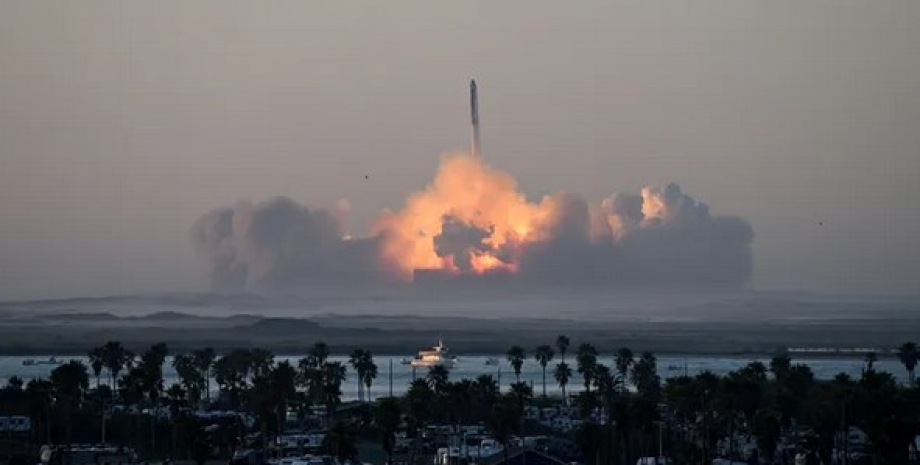
 By Victor Duda
By Victor Duda
In focus. Technology has appeared its Telegram channel. Subscribe not to miss the latest and most intrusive news from the world of science! The largest rocket in the world, the Starship rocket went to the second test flight into space in November 2023 from SpaceX Starbase spaceport. About 4 minutes after the start, the first stage of the rocket separated from the top of the rocket, as planned, but suddenly exploded and could not land back, as he should do.
After 4 minutes, the upper stage of the rocket at an altitude of about 150 km broke out. The authors of the new study believe that the second explosion led to the temporary creation of a hole in the ionosphere (part of the Earth's atmosphere, extending at an altitude of 80 to 650 km), where gases are ionized or deprived of electrons and converted into plasma. The hole existed for about 40 minutes, but then disappeared. Its size remains unknown.
According to scientists, holes in the ionosphere can be created as a result of interaction with rocket fuel. Chemicals in fuel, such as carbon dioxide and water vapor, can react with ionized oxygen atoms, forcing them to temporarily turn back into conventional oxygen atoms. Thus, a hole is formed in the plasma of the ionosphere. Such holes usually create SpaceX rockets when the degree or rocket is divided into unnecessary fuel.
When the atoms inside the holes turn back into plasma, they produce red light and thus emerge similar to the polar glow. But in November last year, the first case of a hole in the ionosphere was recorded caused by the rocket's explosion. Scientists believe that the shock wave from the explosion temporarily scattered free electrons inside the ionosphere and deprived the plasma of its ordinary properties.
Scientists have stated that holes in the ionosphere are still poorly studied, so they still need to be better studied in order to learn more about the Earth's ionosphere. The first test of the Starship rocket in April last year also ended in an explosion, but then the hole in the ionosphere was not created, scientists say. Most likely, this was due to the explosion at a lower altitude, and the shock wave did not reach the ionosphere.
During the third test flight, the SpaceX spacecraft, which is part of the SpaceX rocket, first went out into orbit, but then fell somewhere in the Indian Ocean, as the focus wrote. We remind that scientists have presented a new hypothesis of dark matter, according to which this mysterious substance can hide in the nuclei of strange objects in space.










All rights reserved IN-Ukraine.info - 2022